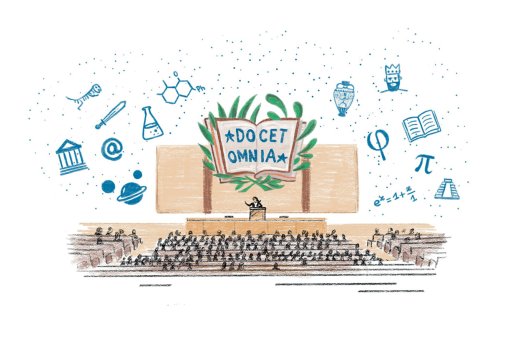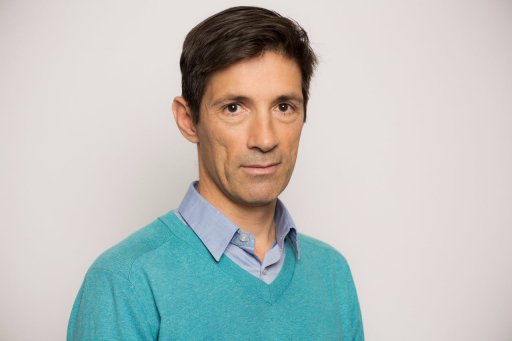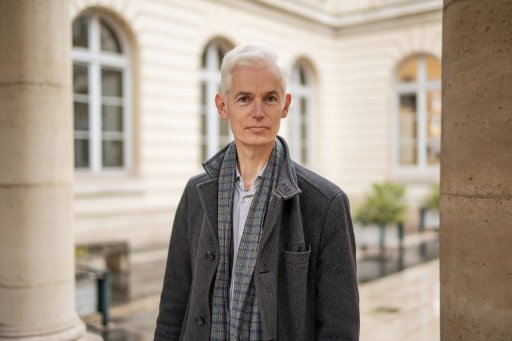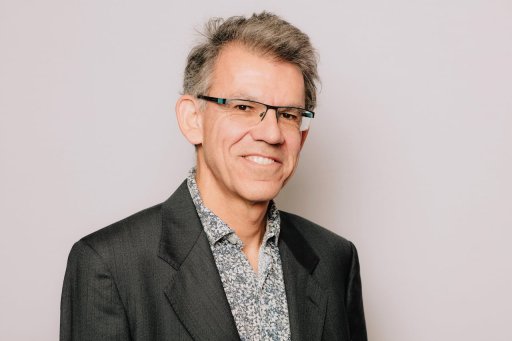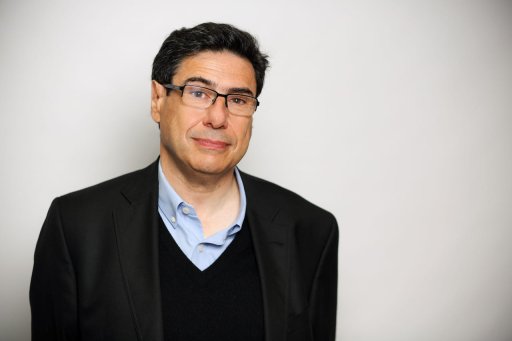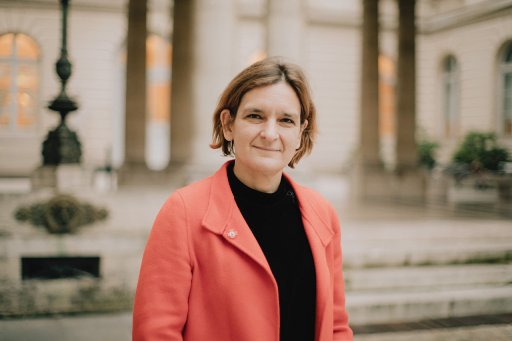André Bareau (1921-1993)
Mr. Administrator, dear colleagues,
As a student, I attended lectures by André Bareau. When I joined the CNRS, he became my research director. As a candidate for the newly-created chair in the history of Buddhism at the Collège de France, he did me the honor of asking me to be second in line. Twelve years later, he proposed that you create a chair for me. He had me elected, and we shared the same office for ten years. Today, it falls to me to deliver his eulogy, in much the same way as it falls to the eldest son of a Hindu family to light his father's pyre. He had to do the same, under the same conditions, for Mr. Jean Filliozat. This is to tell you, my dear colleagues, that in the small world of Indianism, academic filiations sometimes have the value of blood filiations. The Indians call this a paramparā, a succession, a lineage in which each point is a master, who was first a pupil. But unlike some Indian masters, my masters, and Monsieur Bareau in particular, never demanded imitation, obedience or the slightest service. Monsieur Bareau was a guru who never asked for anything, but gave everything.
Born into a modest family in Saint-Mandé on December 31, 1921, he passed the competitive entrance examination for the École Normale d'Auteuil in 1938. He was appointed teacher at La Varenne-Saint-Hilaire in 1941. He then began his higher education. Preparing a degree in philosophy at the Sorbonne, he also discovered Sanskrit and Pâli. With the agreement of his wife, also a schoolteacher, and his family, he took two years' unpaid leave to write, under the direction of Monsieur J. Filliozat, to write a dissertation for the École Pratique des Hautes Études on the Pali Buddhist notion ofasaṅkhata, literally incomposed, which in Western philosophy is called the absolute. The dissertation was defended in 1947, enabling him to enter the CNRS. Four years later, he had extended his investigation to Sanskrit, Tibetan and Chinese Buddhist texts, and defended his main thesis L'Absolu en philosophie bouddhique. Évolution de la notion d'asaṃskṛta (1951). Those few years during the war and post-war years, which the harshness of the times did not always make easy, were also those of great joys: the joys of family, the joys of intellectual discoveries, the joys of meeting and forging friendships with exceptional masters and fellow students. All of Monsieur Bareau's personality shone through: an extreme attachment to a close-knit family, where family mutual aid was a natural part of life; the strong imprint of the republican and secular École Normale and his profession as a teacher, of which he was very proud and whose ethical values he had made his own; a great zeal for work and the ability to conceive and complete a large-scale project; a taste for philosophy, which rapidly developed to include the history of philosophy, then the history of ideas, and finally history in its entirety; loyalty to teachers and friends who effectively gave everything and asked nothing.
His masters, our colleagues Jean Filliozat and Paul Demiéville, had introduced him to the demands of the study of French Buddhism, of which S. Lévi had already given an outline here. Lévi had set the first example and formulated the rules: since the most ancient Buddhist texts are attested in versions several centuries after the Buddha's disappearance, no Buddhist school, no matter how ancient it may boast or how prestigious it may be, can claim to be the sole and faithful heir to the teachings of the vanished master. There is no hierarchy of value between the sects; one of the tasks of the historian of Buddhism is to try to understand the mechanism by which they were constituted, how they proceed from one another and what they have preserved of the founder's doctrine. The methods used are those of ordinary history, but the expansion of Buddhism means that they also require knowledge of multiple languages. To reconstruct the unwritten history of Buddhism, it is necessary to scrutinize archaeological remains, use the testimony of inscriptions, search non-Buddhist Indian literature for elements that will enable us to better define the origin and originality of the Buddhist Holy Truths (ārya-satya), and also, as in historical linguistics, to practice the comparative method: by comparing all the preserved versions of the same text, establish their filiation, isolate the common part supposed to be the oldest (but which is not always so), detect additions and transformations and try to explain them. These versions are in Middle Indian (pāli and other Prakrits), Sanskrit, Chinese or Tibetan; indigenous, Burmese, Sinhalese, Indo-Nepalese, Chinese, Tibetan and Japanese scholarship has created and continues to create works that are invaluable tools of approach and understanding; and since the 19th century, Western scholarship, in English as well as Russian, German and of course French, has produced works whose knowledge is necessary. A specialist in Buddhism needs to be proficient in most of these languages, and able to cope with the others. Monsieur Bareau is one of the last Buddhist masters to have made this essential effort. Only Mongolian and Russian remained entirely foreign to him: they were of little importance to the subjects he preferred to study.
His great qualities soon won him academic recognition. He was appointed Director of Studies in the 5th section of the École Pratique des Hautes Études in 1956, and was elected to the Chair of Buddhist Studies at the Collège de France on March 7, 1971. His output never flagged. His bibliography, still incomplete, lists the titles of 13 books and 114 articles, not to mention numerous reviews and lecture notes. Like most Orientalists, he saw it as his duty to give the public as accurate a picture as possible of the field he was studying; indeed, his extreme kindness would not have allowed him to shirk the many requests he received. His purely scientific work continued and developed his early work. Studying the notion of asaṃskṛta in ancient Buddhism, Monsieur Bareau had observed its relative variability. It was necessary to explain, and to do so, first of all, to know the starting point, the original teachings of the Master, since it is admitted that there was a Master and that he, without ever giving a systematic exposition, preached a doctrine that he claimed to be original. It was also necessary to understand the way in which this teaching had been transmitted, in other words, to know how the primitive monastic community had been constituted, to try to ascertain its primitive composition, to know how and why it had divided, even before the Master's death it seems today, into groups with slightly divergent views that we call sects in French. The two issues are linked; I'm only separating them here for the sake of convenience. Mr. Bareau published a series of authoritative studies on the sects of ancient Buddhism, their location, origin, numerical and doctrinal importance. At the same time, he sought to determine the historical value of the indications that their texts had transmitted to us, hence other studies, which have remained fundamental, on the date of the Master's disappearance (Buddhists say: of the nirvāṇa), on the reality of the first Buddhist councils supposed to have fixed his word or to have been the site of the first schisms and finally on what we can really know of the founder's life. A few articles too, originally written at the request of students or colleagues, on Buddhist edifices, in particular an essential text, written long before the subject became fashionable, on the construction of the stūpa, and others dealing with the location, appearance or importance of sites mentioned in ancient Buddhist texts. The theme recurred frequently in the last years of his lectures, so much so that for Monsieur Bareau the history of ancient Buddhism could not be understood without knowledge of the material conditions of the time, and in particular of historical geography.
As a specialist in ancient Buddhism, Mr. Bareau knew the importance of the texts that monastic communities had preserved over the centuries by chanting them daily, copying them over and over again, inscribing them on stone and metal, and hiding them when necessary - texts that non-Indian monks came to India to find, at the cost of long and dangerous journeys, and which they carefully translated over the centuries. But he also knew that a text, however ancient, cannot be interpreted solely by the methods of philology. He had interviewed many Sinhalese monks visiting Paris, the venerable Walpola Rahula in particular, and had frequented Buddhist communities in Ceylon and Indochina, visited ancient sites and travelled the roads of India, sometimes under difficult conditions. Having traveled with him, I know that he was a man of the land, a tireless walker looking at his maps, scanning the landscape and capable, if need be, of sleeping on the ground on a half-empty stomach without thinking of complaining. When he spoke of a historical site of ancient Buddhism, he had often visited it himself, sources and maps in hand, to try to reconstruct the ancient landscape and understand how people lived there. But he would never have had the idea of posing as an explorer, traveler or adventurer.
Even his writing was modest. Under his pen, everything is simple and seems self-evident. In reality, Monsieur Bareau was tackling some of the most difficult and important issues in Indian history, issues that are still the subject of debate in Western historiography and whose importance the Buddhist community itself is beginning to grasp: the date of the Buddha and the historicity of the episodes in his life, the reworking of the canon that is supposed to preserve his word, the nature and filiation of the sects. For the past thirty years, it has been impossible to write seriously on these subjects without resorting to the comparative and critical study of the sources he has provided. As for historians of India, they will soon have to take a close look at his Recherches sur la biographie du Buddha: by demonstrating that Buddhist legend was essentially constituted from the 3rd century B.C. onwards, more than a century after the disappearance of the Master, he has forbidden historians of India to use the details found therein to reconstruct the history of India in the 6th and 5th centuries B.C., as almost all of them have done since the 19th century.
Modest to a fault. Mr. Bareau shunned titles, honors and so-called positions of power: it was out of a sense of duty that he accepted to be a member of the CNRS National Committee for a time, director of a CNRS research team or director of the Institute of Indian Civilization at the Collège de France. He had a passionate love of lectures, and was always ready to help and encourage students and young researchers. He was not one of those historians who consider that the history of Buddhism can be reduced to that of its origins: he understood the legitimacy of research carried out from a perspective other than his own, and would even have tended to attribute more interest to it than to his own. And if a young researcher working on subjects he had dealt with came up with new arguments that cast doubt on his own conclusions, he felt a kind of intellectual jubilation, happy above all to see that on no subject had the last word been said, and that the effort of understanding begun by Eugène Burnouf and Sylvain Lévi would continue after him.
Monsieur Bareau was a profoundly good man. His last years were difficult and painful, but he never complained. Speechless, he greeted his last visitors with a smile that seemed to tell them he loved them and apologized for causing them pain. His Protestant funeral was dedicated to Luke's words, "Peace on earth to men of good will". Monsieur Bareau was a man of peace and goodwill.
Gérard Fussman, 1994.
Reference
Printed
Fussman G., "Hommage à André Bareau (1921-1993)", L’annuaire du Collège de France, Paris, Collège de France, n° 93, 1994, p. 97-101.





